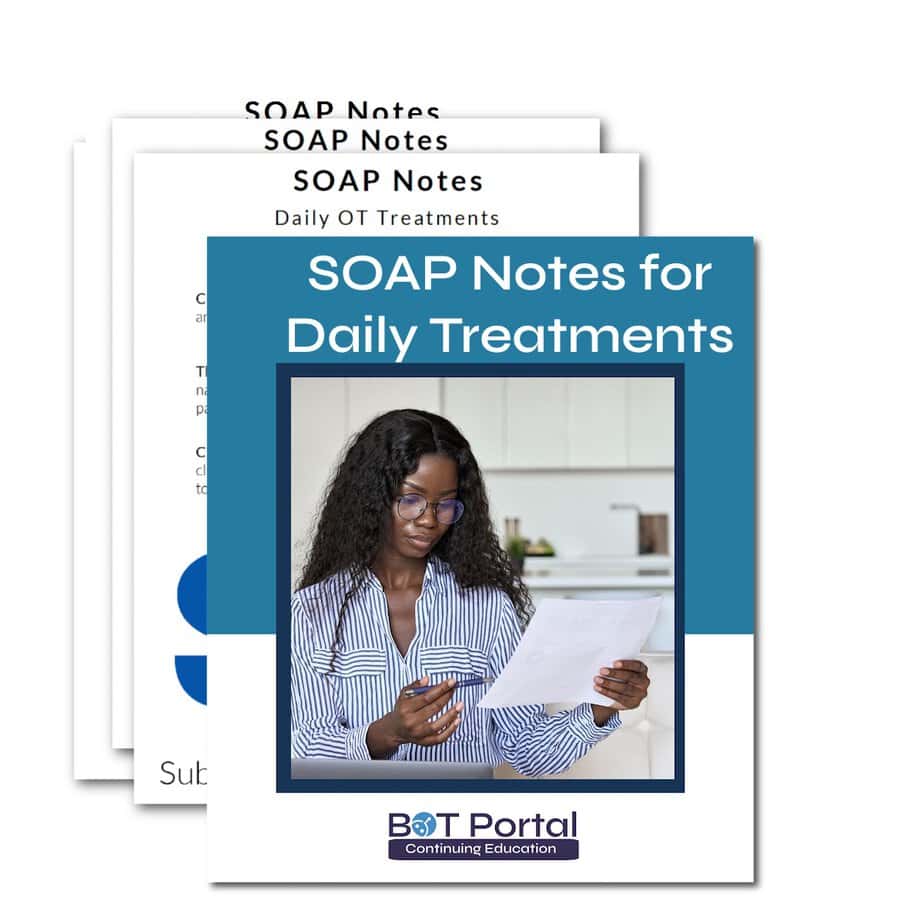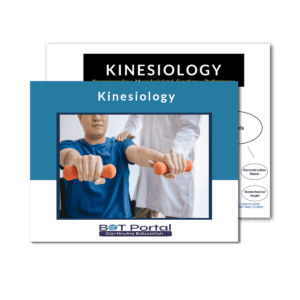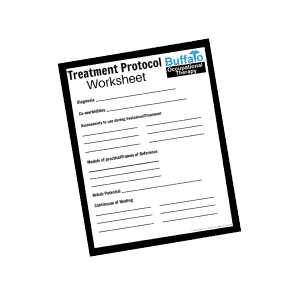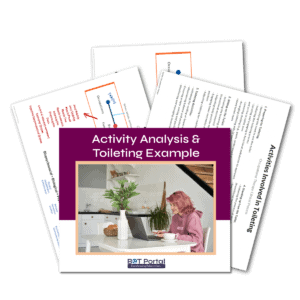Description
SOAP Note for Occupational Therapy Practitioners
This original document is for all occupational therapy students and practitioners searching for a good printable to guide you through SOAP Notes as an Occupational Therapy Practitioner. In order to be a cutting-edge occupational therapy practitioner, you must have superb documentation skills. The SOAP Note for OTPs printable will provide a great reminder resource on crucial elements for each section of the SOAP Note! Download the ‘SOAP Note for Occupational Therapy Practitioners Printable‘ pdf for a documentation reminder of a SOAP Note and why occupational therapy practitioners use this common guide.
Background:
A SOAP note is a standardized format for documenting patient care in healthcare settings, including occupational therapy. Here’s a breakdown of what each section typically includes:
Subjective (S): This section captures the patient’s self-reported experiences, complaints, and descriptions of their condition. It may include quotes from the patient and observations from family members or caregivers.
Example: “Patient reports feeling more fatigued during therapy sessions this week and mentions increased difficulty in completing daily tasks at home. Caregiver notes that the patient has been more forgetful.”
Objective (O): This section contains measurable, observable data gathered during the therapy session. It includes assessments, tests, and observations made by the therapist.
Example:
- Range of motion in the right shoulder: 0-90 degrees.
- Grip strength: 25 lbs on the right hand, 30 lbs on the left hand.
- Patient completed a 5-minute timed activity involving sorting shapes with 80% accuracy.
- Visual perception task: patient identified 8 out of 10 shapes correctly within 3 minutes.
Assessment (A): This section includes the therapist’s clinical interpretation of the subjective and objective data. It discusses the patient’s progress, changes in condition, and the effectiveness of the treatment plan.
Example:
- Patient shows moderate improvement in upper extremity strength but continues to struggle with fine motor tasks. Increased fatigue may be impacting performance.
- Visual perception skills are progressing, as evidenced by improved accuracy in sorting tasks.
- Memory issues remain a concern, requiring further targeted interventions.
Plan (P): This section outlines the planned course of action, including specific interventions, goals, and the frequency and duration of treatment. It may also include any changes to the treatment plan based on the assessment.
Example:
- Continue with upper extremity strengthening exercises, increasing resistance as tolerated.
- Incorporate more frequent rest breaks to manage fatigue.
- Introduce new fine motor tasks to improve dexterity.
- Schedule a cognitive assessment to further evaluate memory issues.
- Plan to reassess visual perception skills in two weeks.
What is included?
- 1 page SOAP Note Guide
- 4 page guide for using SOAP Note for Treatment Notes




